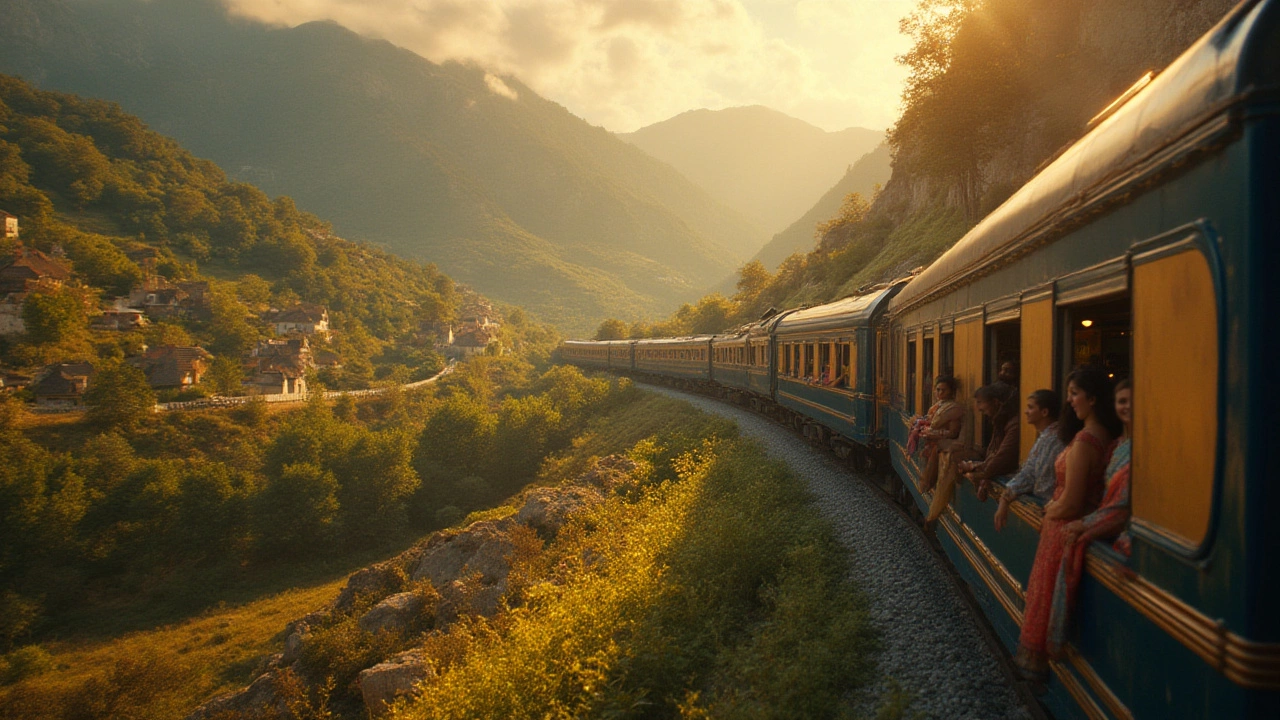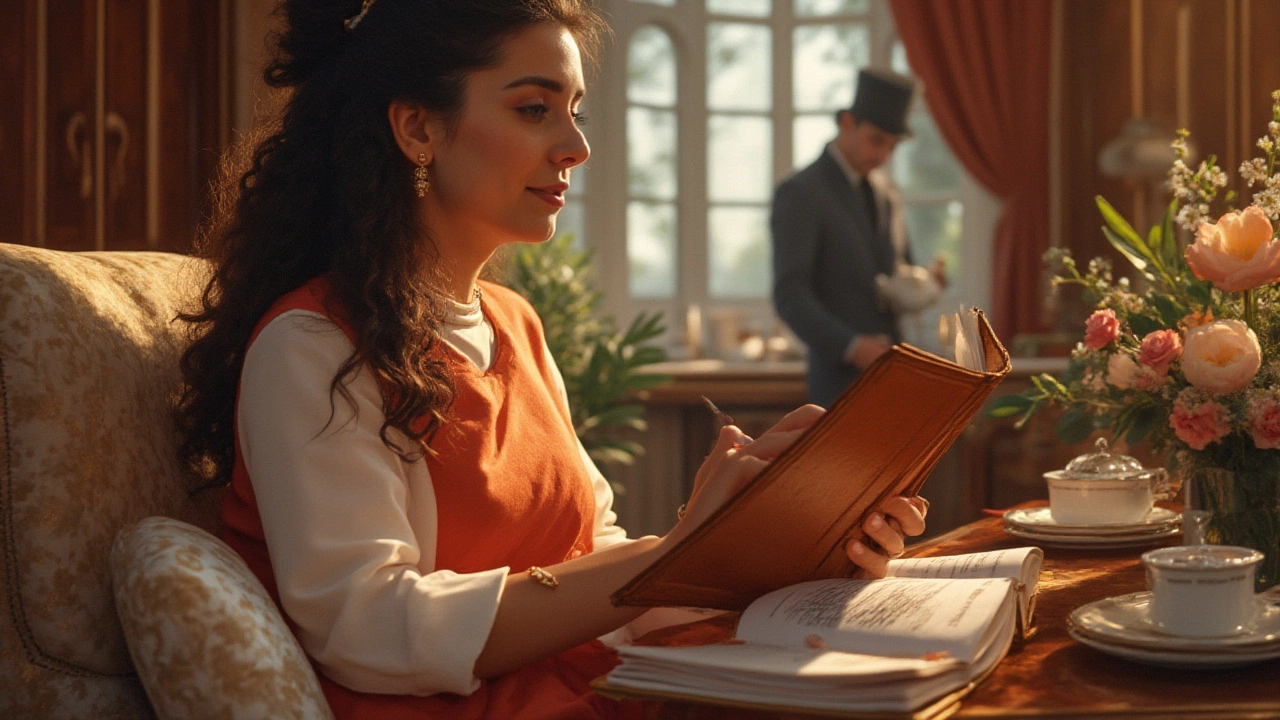Is the Orient Express Worth the Price? Firsthand Experiences, Costs, and Tips
 Jul, 4 2025
Jul, 4 2025
Who actually drops thousands of dollars to ride a train from Paris to Venice and ends up saying, "Yeah, I’d do that again”? The name Orient Express gets thrown around in movies and novels like it's some spell, and let’s be honest—most of us will never buy a ticket unless we’re convinced it’s going to be more than a fancy Instagram backdrop. There are easier ways to get from A to B, way cheaper and a hell of a lot quicker, but there’s something about this train that keeps folks saving up for just one night on board.
I’ll get straight to it: I’ve done the trip. My daughter, Aria, still talks about the duck she ate in the dining car, and she doesn’t even like duck. So, is it actually worth the cost? Let’s dig in.
The Real Costs: Ticket Price Breakdown and Extras
First shocker: it's not just expensive. This is champagne-expensive. A classic one-night journey from Paris to Venice (the most popular route as of July 2025) starts around $4,500 per person for a simple Historic Cabin. If you want a Suite — think beds that don’t require an Olympic gymnast routine to reach, plus a private en-suite bathroom — prices shoot up to $8,000 or more per person. And if you’re going for one of the new Grand Suites? You’re looking at a minimum of $12,000 per head, not including drinks or tip.
What’s actually included for that kind of money? Here’s a no-nonsense breakdown:
- Private cabin and dedicated steward service
- All meals (about as far from microwave dinners as you can get: multi-course gourmet feasts, breakfast in your cabin, mid-afternoon tea with pastries so delicate you’ll consider taking a selfie with them)
- House wines, teas, and coffees
- Excursions on certain routes (this can include a stroll around Lake Como or a private visit to a less-visited castle in Austria, depending on the itinerary)
What isn’t included? Premium champagnes, vintage wines, cocktails in the bar car (yep, all cost extra), souvenirs, and tipping. This stuff adds up, fast. If you’re traveling with a family like I did, the costs multiply, and you might have to book multiple cabins since most don’t allow three to a room.
Here’s a quick price snapshot based on 2025 rates:
| Cabin Type | Price Per Person (USD) | Key Features |
|---|---|---|
| Historic Cabin | ~$4,500 | Bunk beds, shared facilities |
| Suite | ~$8,000 | Double or twin, en-suite, seating area |
| Grand Suite | $12,000-$15,000 | Super luxe, marble bathroom, butler |
Pricey, right? So what do you actually get for that dent in your savings?
The Experience: This Isn’t Your Average Train Ride
From the moment you step onto the platform, it feels like entering a movie set—no exaggeration. Staff greet you in tailored uniforms, and those 1920s blue-and-gold carriages gleam like someone’s been scrubbing them for hours (they have). If it’s raining, they’ve got umbrellas, and if your coat is wrinkled (like mine always is), the steward will fix that before you even make it to your room.
The historic cabins are tight—think ship’s cabin, not hotel suite—but every detail is designed to hit you right in the nostalgia. Fresh flowers, polished wood, and brass fixtures everywhere. The legendary art deco bar car is where everyone ends up after dinner, nursing Negronis while a pianist takes requests.
The food is where the Orient Express really flexes. My daughter Aria still raves about the perfectly cooked duck à l’orange, and the bread rolls they serve with breakfast are disturbingly addictive. Chefs use ingredients picked up at stops along the journey, so the menu always fits wherever the train is passing through. In 2024, a notable upgrade was adding plant-based tasting options, which was a win for my cousin who tagged along last year and still hasn’t stopped talking about her beetroot carpaccio.
You don’t just eat—dinners here are mini events. Tuxedos, evening gowns, stiff-collared shirts affair. I wore a jacket I haven’t squeezed into since college and nobody judged when my kid wore sparkly sneakers under her dress.
Bedtime is its own ritual. You return from the bar to find your cabin transformed: sheets turned down, little chocolates on your pillow, gentle lamp light. Most cabins pull double duty as nests by night, lounges by day, thanks to some clever folding furniture worthy of a Hogwarts classroom. It’s cozy, but be ready to hear the train click-clacking all night. Noise isn’t overwhelming, but this isn’t Peaceful Valley Spa—bring good earplugs if you’re a light sleeper like me.
Here's a peek at classic features onboard:
- Three art deco restaurant cars (Côte d’Azur, L’Oriental, and Etoile du Nord)
- Live piano music in the bar car
- Sumptuous lounges (yes, you can just curl up with a book and a glass of wine all afternoon)
- Onboard boutique selling everything from silk scarves to vintage train memorabilia
Service is where things get almost weirdly perfect. Forget your favorite pen at dinner? Your steward will somehow conjure it from thin air. Housekeeping slides quietly through the corridors, and if you make a throwaway remark about wanting tea “the English way,” it’ll be on your tray next morning.

The Magic Beyond the Train: Scenery and Destinations
All the luxury in the world won’t matter if you’re just watching hedges and parked cars whiz by, so here’s where the Orient Express really earns its myth. Routes twist through the heart of Europe: snow-dusted Swiss Alps, Italian lakes, Parisian suburbs at dawn with bakery windows just lighting up. The windows are the size of movie screens; if you’re into landscapes, you’ll use up your phone storage in a few hours.
The train typically stops at least once on most journeys for a short shore excursion. When we did Paris-to-Venice, we slipped out in Innsbruck, Austria, and strolled through streets lined with medieval buildings while snacking on strudel that tasted vaguely illegal. If your itinerary includes a night stop in Budapest or Vienna, you’ll get chances for proper city tours—just don’t expect days of sightseeing; you’re supposed to treat the train as both “hotel” and “destination.”
Arguably, the train’s most famous journey—the annual Paris to Istanbul epic—spans six nights, crossing five countries and serving up everything from Viennese coffee to Turkish meze. Not for those who bore easily, but hard to beat if you want to marry history with bragging rights.
Everyone on board says they’re there for “the romance,” but the biggest shocker? It’s the wild mix of people, from honeymooners in Grand Suites to retirees checking a dream off the bucket list, and—yes—a few lucky kids like Aria. Most people unplug for at least a little while, chatting with strangers over cocktails in the bar car, swapping stories, or simply staring out the window as the world slips by. No Wi-Fi here.
- Popular current routes (2025):
- Paris–Venice
- London–Paris–Venice
- Paris–Budapest–Bucharest–Istanbul (once or twice each year, limited seats)
Europe’s landscape looks older and more magical from this height—especially when you’re gliding over stone bridges at dawn, staring down misty valleys. If you’re the kind of traveler who prefers to “see” through a window instead of a guidebook, this trip is pure theater.
What Surprised Me: The Secrets and Challenges
The Orient Express isn’t perfect, and it pays to know the quirks. Let’s get real: luggage space is tiny. If you travel with oversized bags, you’ll have to check your main suitcase and live out of a carry-on. I learned this quickly when my daughter’s suitcase (filled primarily with plushies and snacks) barely squeezed under the bunk.
The bathrooms in standard cabins are shared at the carriage ends. Think spotless, but not exactly room to turn cartwheels. Suites and Grand Suites have private marble bathrooms—big upgrade, but at a steep price. Forget long showers, though: water tanks are limited for everyone.
If you’re picky about temperature, breathe easy: after some complaints, they upgraded the air conditioning in 2024. Now the cabins stay at a calm 72°F/22°C even if Southern Europe’s baking. You still can’t open windows (safety), but they’re cleaned so often that views are spotlessly clear.
Food allergies? They take them seriously. I warned them about Aria's peanut allergy, and every menu arrived with special marks and extra checks—no drama, just smooth accomodation. Vegetarians and vegans, rejoice: they added a dedicated kitchen staff for plant-based dishes in late 2023, with actual creativity (think artichoke “oysters” and wild mushroom risotto), not just salads.
Your phone will mainly serve as a camera or notepad; there’s zero Wi-Fi, which forces teens (and grown-ups) to talk, play cards, or—crazy idea—read a book. I actually finished a novel I’d started the spring before, and Aria spent the better part of two hours sketching outside the bar car window.
And don’t be shy to pack at least one ‘fancy’ outfit per passenger. Dinner means getting dressed up, which could stress you out but also makes the whole thing feel different. If you forget something, the steward will usually lend ties or jewelry, but try to come prepared for at least two formal nights (for journeys over two days).

Who Should Book, and How to Make the Most of It
Is the Orient Express for everyone? Not really. If you get impatient, hate the idea of having a shower down the hall, or balk at the idea of set dining times, maybe pass. For those who geek out over history, old-school service, and travel that’s about the journey—not the destination—this is your Holy Grail.
Some tips from my own ride, and from friends who took other routes:
- Book as early as you can—these trips usually sell out a year ahead, especially the Grand Suites.
- If you’re on a budget but want the experience, go for a Historic Cabin, but pack light and expect to share a bathroom.
- Travel in spring or early autumn. Summer journeys sell out hardest and cost the most. Shoulder seasons are quieter, with better scenery in Switzerland and Austria.
- Request a cabin in the middle of the train—less vibration and noise at the ends.
- If you don’t want to pack formal clothes, check the schedule for special “relaxed dress code” runs, usually two or three per year.
- Check for special event journeys (like “murder mystery” weekends or wine-tasting specials) if you want something a little different.
Maybe it’s about nostalgia, maybe luxury, or maybe just marking off a wish-list item with a bit of style. For some, the price is justified because it’s the combination—the setting, the food, the service, the scenery, and the random, wonderful people you’ll never meet again.
People ask me if I’d do it again. Not every year, but as a one-off with someone you love, it’s almost impossible to top. Aria still talks about it every time a train rumbles past our house. I can live with that kind of investment.